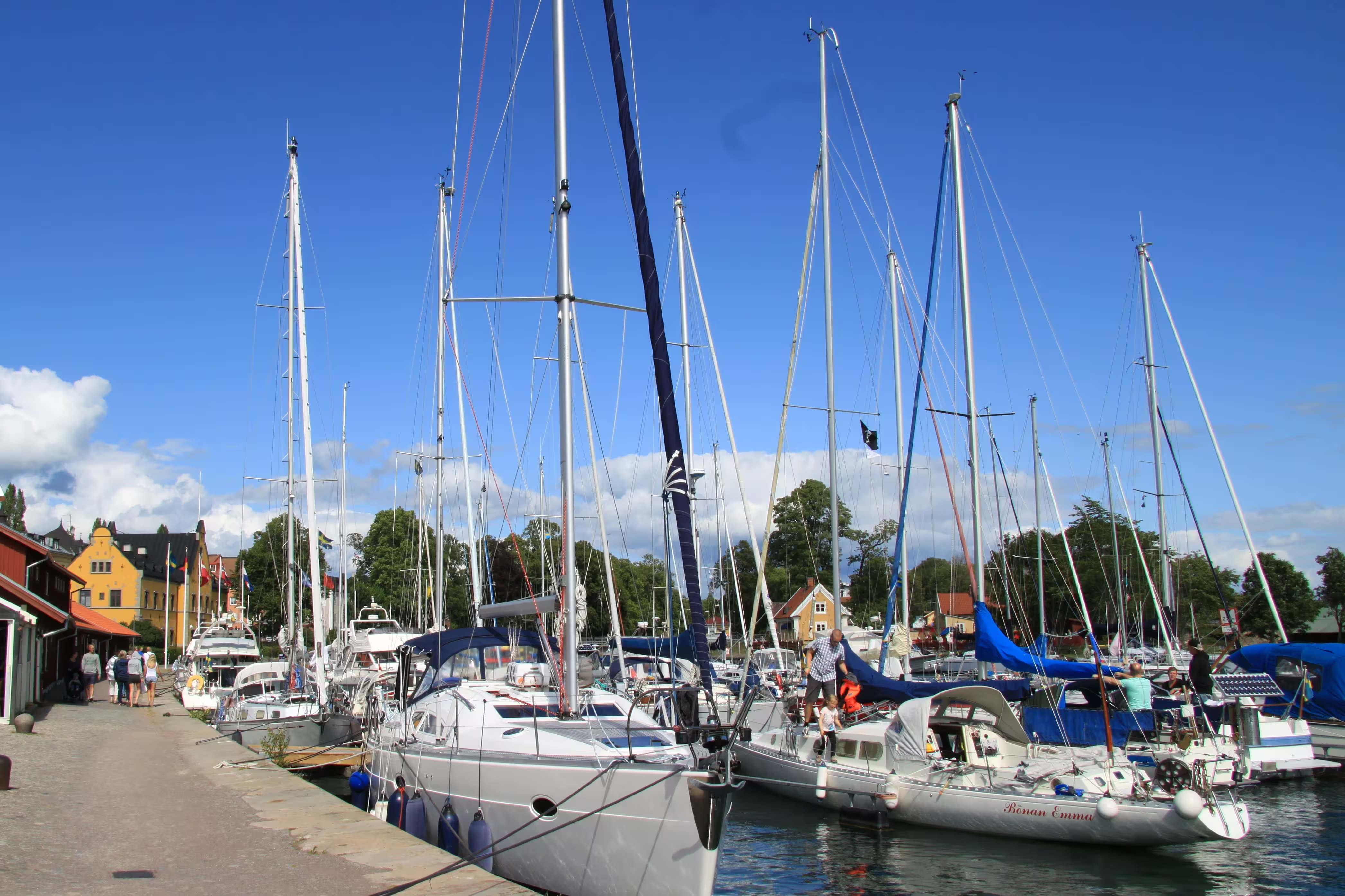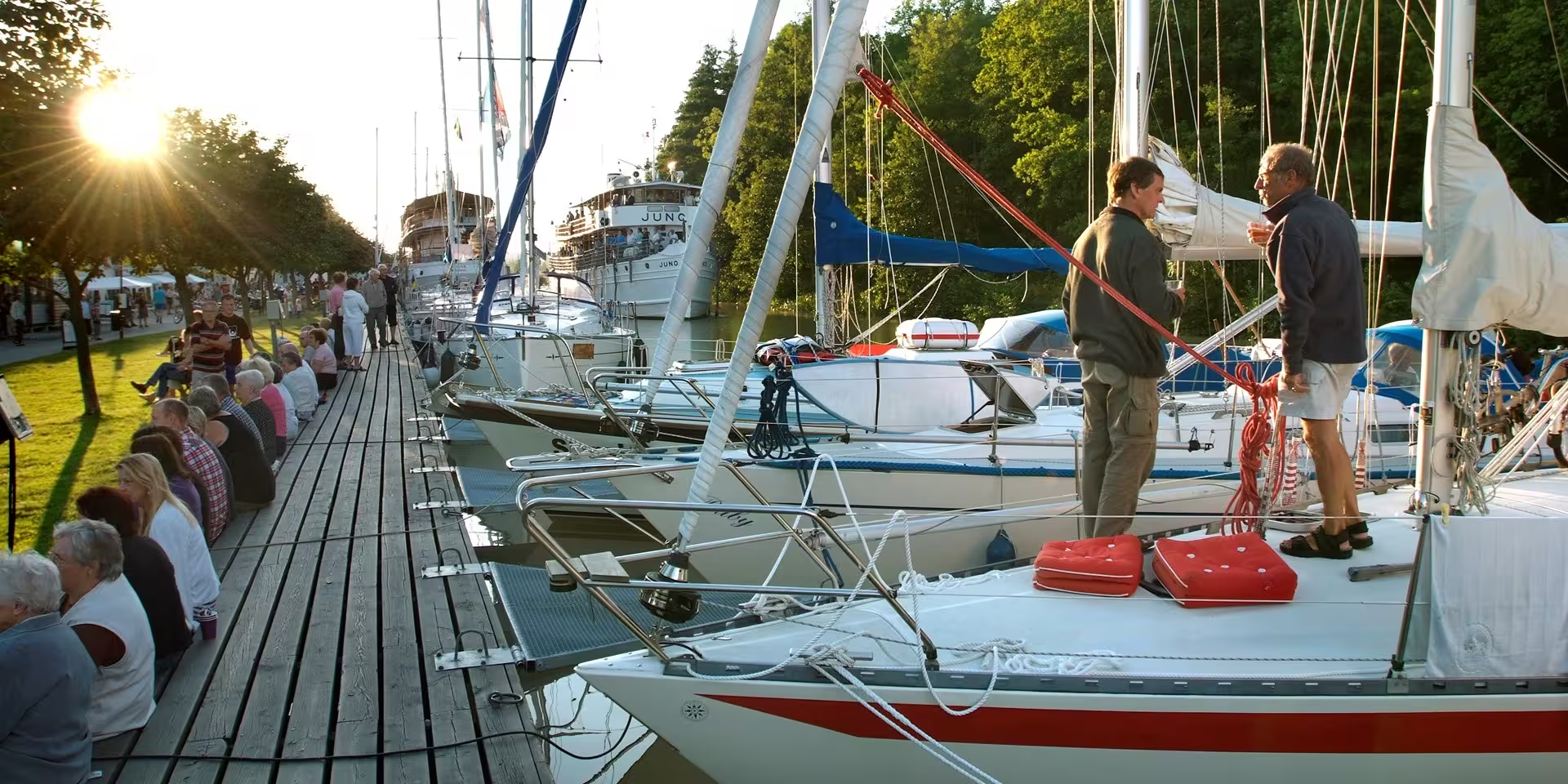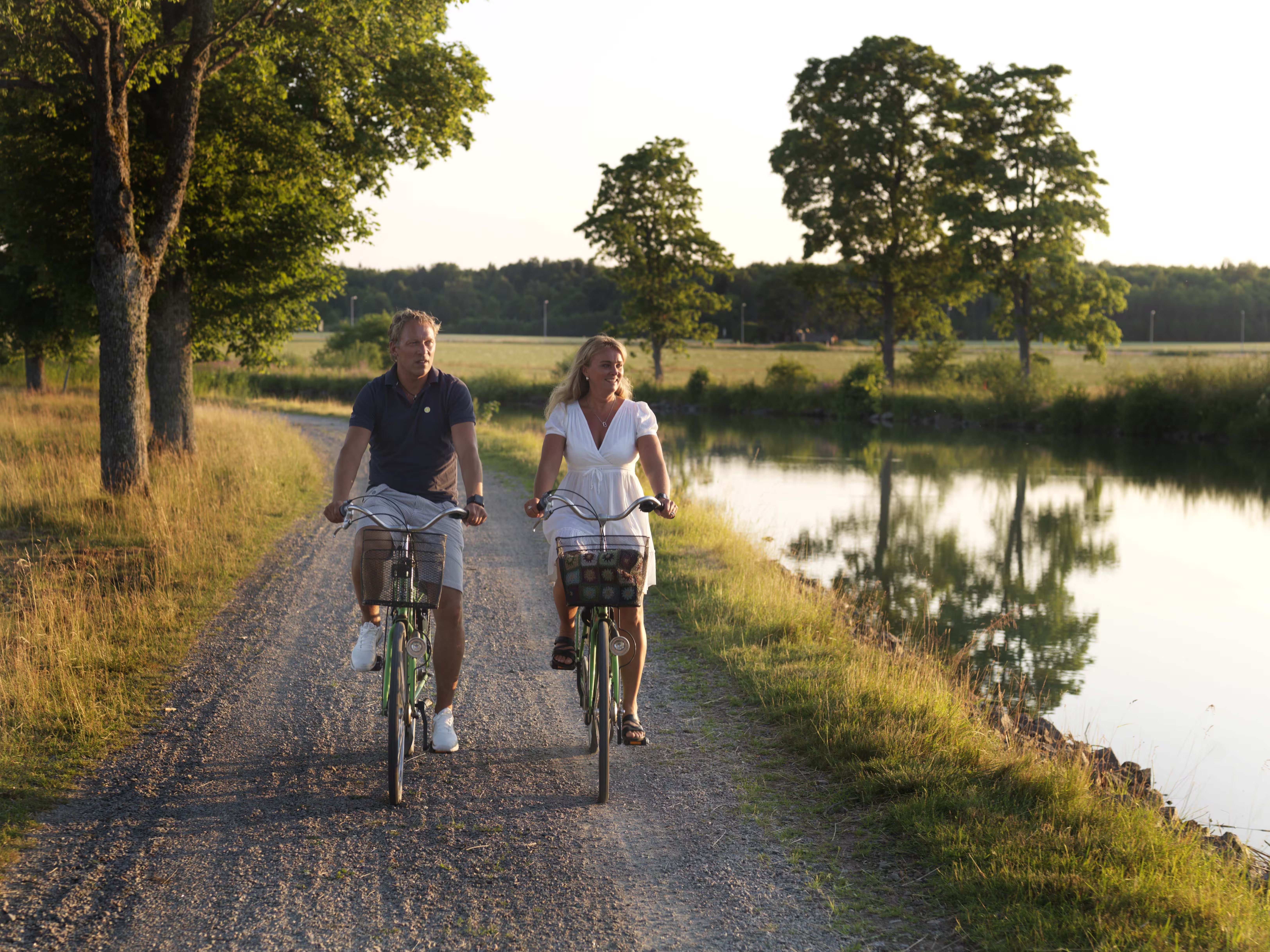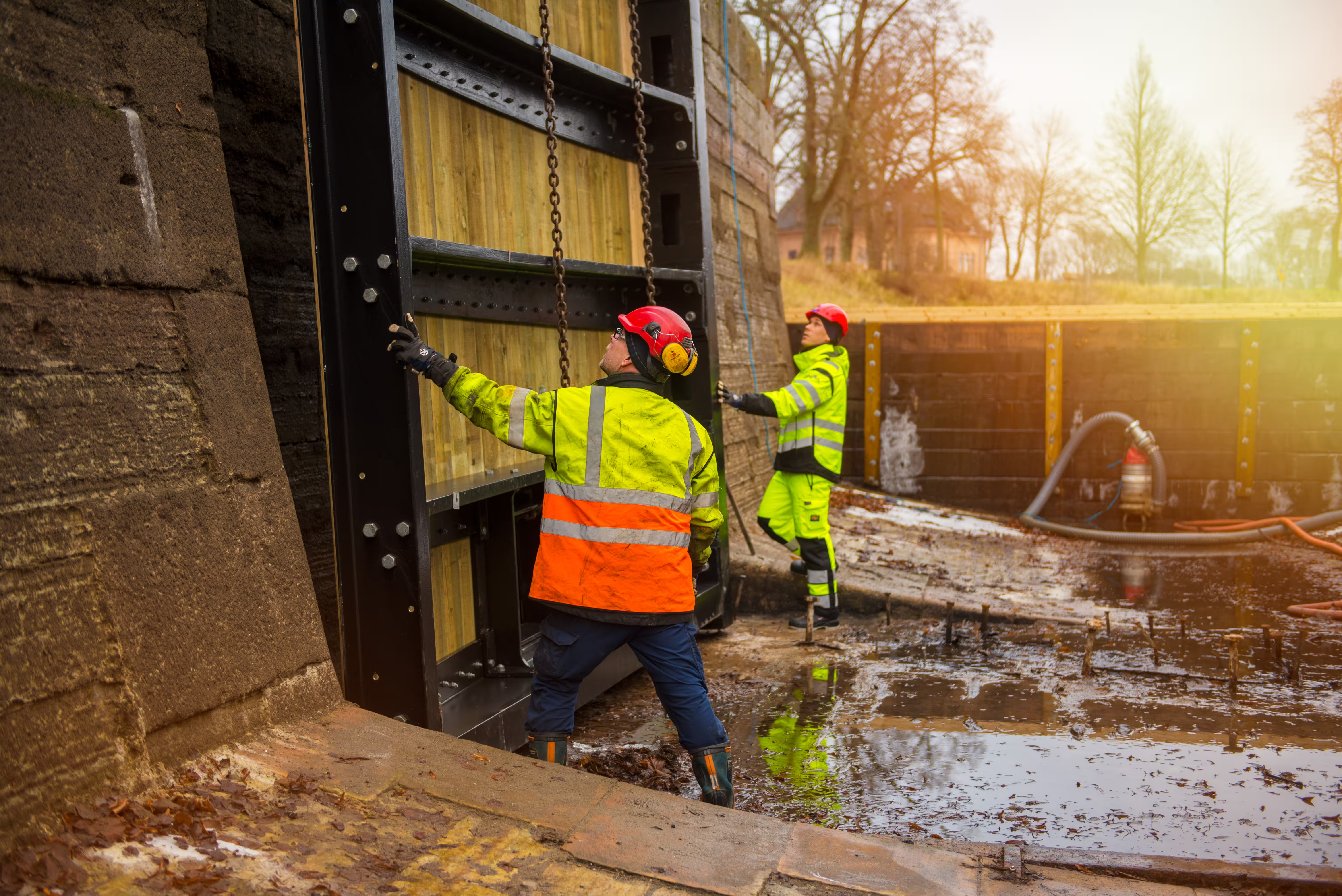Running from the village of Sjötorp on the eastern shore of Lake Vänern to the village of Mem on the Baltic Sea, the Göta Canal - pronounced yurta - is not only an icon of Sweden’s rich boating heritage but has become a much beloved tourist attraction in its own right.

With a string of picturesque marinas and guest harbours dotted along the entire waterway, winding through cobalt blue lakes, verdant fields and multicoloured rural towns, the Göta Canal represents a uniquely bucolic boating experience that could just as well have jumped straight out of the books of Astrid Lindgren.
“Instead of overcrowding, heat and expensive marinas, here you will find a cooler climate, green landscapes, grazing sheep, historic locks and personal service in a small-scale and genuine environment,” said the Göta Canal Company’s head of marketing and communications Magnus Hollwin. “Unlike the Mediterranean’s often large and commercial marinas, the Göta Canal is a journey in itself. Here you can combine boating life with cycling, swimming, culture and Swedish summer gems in every little harbour.”
While the inland waterway connecting Sweden’s west coast to its east coast had been proposed as early as the 15th century, it took another few centuries before it was built. Construction of the Göta Canal only began after an aristocrat and naval officer of Pomeranian extraction, Baltzar von Platen, proposed his idea to King Gustav IV Adolf in 1808.
Construction on the route began in 1810 and was completed in 1832. With 58 locks and a maximum altitude of 91.8m above sea level, the Göta Canal is 190km long and traverses seven lakes. Including the Trollhätte Canal that was opened in 1800, the waterway continues via Lake Vänern - the largest lake in the European Union - and finishes in Gothenburg, making it possible to traverse the width of Sweden inland rather than navigate its perilous Baltic Sea archipelagos to the south.
_converted.avif)
The boating basics
To be clear from the outset, boating along the Göta Canal will never be a high-octane, adrenaline-fueled adventure. This is Sweden, after all, a country famous for its “not too much, not too little” philosophy to life. The top speed along the Göta Canal is five knots and a typical journey from start to finish takes roughly five days, although most guests will spend between 10-14 days on the canal to fully enjoy all it has to offer.
It can accommodate boats up to 30m long, 7m wide and 22m high, while the maximum draught is 2.82m in the centre of the waterway, making a trip along the Göta Canal accessible even to smaller superyachts.
Boaters should account for unforeseen delays, which may occur due to waiting several hours at locks because of oncoming traffic, raised railway bridges, giving way to passenger boats, low water levels and even thunderstorms. The Göta Canal’s own website encourages visitors to “not create a too detailed schedule” and “allow plenty of time to enjoy all the experiences a canal trip has to offer”.
There are 21 marinas and guest harbours along the length of the Göta Canal, and a total of five nights in each marina are included in the canal ticket with additional nights available for purchase from the lock keeper. Furthermore, very much in line with Sweden's relatively easy-going egalitarianism, it is not possible to reserve berths in any marina along the canal in advance. The principle of first come first served “applies to all”.
_converted.avif)
Mooring, amenities and activities
Not all marinas along the Göta Canal offer the same mooring options, amenities and activities, although access to all the facilities at any marina are included in a canal ticket. The vast majority of marinas along the route offer predominantly alongside mooring, with finger pontoon and/or buoy mooring available at many of the larger marinas including Sjötorp at the canal’s western end, as well as at Karlsborg, Motala, Berg and Söderköping near the Baltic Sea.
Although these marinas all have between 30 and 50 berths, most of the marinas along the Göta Canal have between 10 and 25 berths. For those willing to trade urban convenience for pastoral serenity for a night or two, the dinky little harbours at Tåtorp and Borenshult have eight and seven berths respectively, but only a toilet and limited - but not non-existent - leisure options.
As for the aforementioned larger marinas there is a wealth of restaurants, cafés, shops, sights and outdoor activities to keep you entertained while on terra firma. The guest harbour in Töreboda - one of the largest settlements along the canal with a population of less than 10,000 people - is close to shops, restaurants and other services. The nearby campsite even has heated swimming pools, an adventure golf course and a skatepark.
It is also home to the Lina ferry, which, with a journey time of only 20-25 seconds connecting the western and eastern halves of Töreboda, is Europe’s smallest cable ferry. Fans of quaint maritime quirks would enjoy mooring in the town on a long summer’s evening and taking a trip on the Lina, possibly even pulling the ferry across yourself.

The right of public access
Other marinas known for being hives of activity during the summer are the lively Karlsborg marina, which is also home to Karlsborg Fortress; and the aptly named Berg, where boats are raised or lowered 18 metres at the famous Carl Johan locks. Berg happens to mean “hill” or “mountain” in Swedish.
The exact amenities on offer at each marina vary. Other than the aforementioned minute marinas with minimal creature comforts, however, most marinas along the Göta Canal offer all or any combination of toilets and showers, electricity outlets of varying amperes, drinking water, laundry service, septic tank emptying, latrine cleaning, recycling and fuel.
Another benefit of a week or two cruising the Göta Canal is Allemansrätten, or the “right of public access”, a law that gives everyone the right to roam wherever they like in nature provided that footprints and memories are the only things one leaves behind. It is a cherished part of Swedish culture and a source of great national pride.
“The fact that the Göta Canal is a part of open landscape also makes a big difference,” according to Hollwin. “Sweden’s unique right of public access means that our guests can swim, walk and explore nature along the canal in a way that is far from guaranteed in other parts of Europe.”

But will there be berths available?
Although the Göta Canal attracts some four million visitors every year, roughly three million of these visit over land rather than on the water. In 2024, it was estimated that a record 2,000 recreational boats sailed down the canal, an increase of 20% from the previous year. With increasing visitor numbers and pre-booking berths not being possible, it is understandable that some might be concerned about finding available berths during the peak summer weeks.
Speaking to Sweden’s public broadcaster SVT in July 2024, Magnus Hollwin said that too many boats could theoretically visit the waterway if everyone came at the same time. After all, the canal welcomes many people especially in July and for that reason they try to encourage visiting a little earlier or later if you are able to.
Seasonal pressures aside, Hollwin said that one usually always finds a place in one of the marinas. “Boaters are good people who help each other,” he continues. “You can moor alongside each other and so on, so it usually works just fine.”
Increasing visitor numbers are of course pleasing, says Hollwin. “More guests means greater economic benefits for both us and all tourist companies operating along the canal – from restaurants and hotels to bicycle rental companies,” he told Marina World.
“At the same time, it places higher demands on logistics, safety and maintenance. Our challenge is to preserve the unique experience – small-scale, personal and close to nature – even as the number of guests grows. This requires smart capacity planning, a broadened season and continued collaboration with regions, municipalities and entrepreneurs along the canal.”

Maintenance and renovation
At over 200 years old, the Göta Canal has seen a considerable amount of maintenance and renovation to keep it the national treasure and tourist destination that it is. Since 2015, the Göta Canal Company - which itself is owned by the Swedish state - has invested over one billion Swedish kronor ($103 million USD) in the largest single renovation project in the canal’s history.
“Maintenance and modernisation of our guest harbors, our more than 400 properties and parking spaces are carried out according to a multi-year plan where we invest in everything from new service buildings, piers, charging infrastructure to digital systems for booking and accessibility,” says Hollwin.
“We collaborate with several partner companies in land and construction, electricity, IT and marine services, for example with suppliers of floating piers, charging infrastructure but also effective booking systems and payment solutions. Major efforts have been made in recent years on the canal's shore protection, maintenance and new production of quays, lock masonry and the like. All to give guests a safe and secure stay, increase accessibility and meet today's expectations for comfort, service and environmental consideration.”
“The Göta Canal is a living piece of cultural heritage and part of Sweden's industrial history,” concluded Hollwin. “For many guests, the history itself – from von Platen's vision and the 58,000 soldiers who built the canal, to life around the locks – is a big part of the experience.”
“Combined with the fascination of old technology, which works just as well today as it did 200 years ago, our history gives us a depth and meaning that sets us apart from more commercial or ‘anonymous’ destinations. Here, visitors can feel the presence of history - while enjoying one of Sweden's most beautiful summer landscapes.”
With 21 well-maintained marinas stretching across 190km of idyllic Swedish countryside, the Göta Canal offers a unique boating experience to those looking to get away from the crowds and disconnect from the stresses and strains of 21st-century life.








